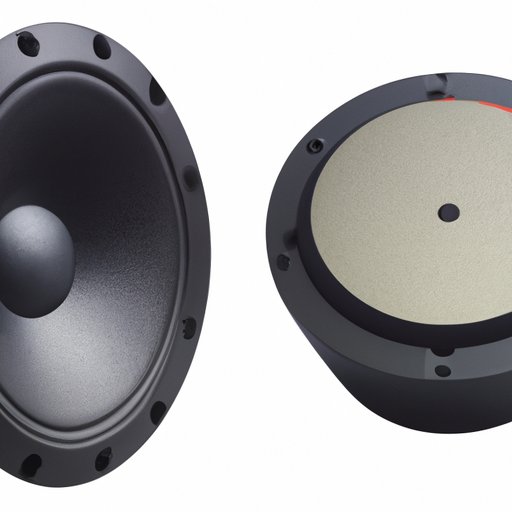Introduction
Speakers are an essential part of any audio system, allowing us to enjoy music, movies, games, and more. But how does a speaker work? This article will explore the components, technology, and types of speakers, as well as the properties of sound waves, how to connect them to an audio system, and the benefits of surround sound and Bluetooth speakers. By understanding these basics, you’ll be able to make an informed decision when choosing a speaker system for your home or car.
Explaining the Components of a Speaker System
A speaker system consists of four main components: drivers, crossovers, amplifiers, and enclosures. Drivers are the most important component, as they convert electrical signals into sound waves. They come in two varieties: woofers, which produce low-frequency bass sounds, and tweeters, which produce high-frequency treble sounds. Crossovers are used to divide the audio signal into different frequency bands, ensuring that each driver is only receiving the frequencies it’s designed to handle. Amplifiers boost the audio signal to ensure the speakers are producing the highest quality sound possible. Finally, enclosures are used to house the drivers and protect them from damage.
How Technology is Used to Create Quality Sound
Modern speakers use a variety of technologies to produce high quality sound. Digital signal processing (DSP) is used to optimize the sound output of the speakers, allowing you to customize the sound to your own tastes. Frequency response is another important factor, as it determines how accurately the speakers can reproduce different frequencies. Power handling is also important, as it determines how loud the speakers can get without distorting the sound. Many modern speakers also come with features such as Wi-Fi streaming, multi-room audio, and voice control.

Describing the Different Types of Speakers
There are many different types of speakers available, each with its own unique characteristics. Bookshelf speakers are small and compact, making them ideal for tight spaces. Floor standing speakers are larger and heavier, and are best suited for larger rooms. Satellite speakers are smaller than bookshelf speakers, and are often used for surround sound systems. Center channel speakers are designed to produce dialogue in movies and TV shows. And subwoofers are designed to produce deep bass frequencies.

Investigating the Properties of Sound Waves
In order to understand how speakers work, it’s important to first understand the properties of sound waves. Acoustics is the study of sound, and it’s used to determine the best placement of speakers in a room. Waveforms are the visual representations of sound, and they help us understand how sound travels through a room. Reflection and absorption are two other important concepts, as they determine how much of the sound is reflected off walls and other surfaces and how much is absorbed by the materials in the room.

Demonstrating How to Connect Speakers to an Audio System
Once you’ve chosen the right type of speakers for your needs, the next step is to connect them to an audio system. For most home audio systems, this involves connecting the speakers to an amplifier or receiver. For computers, you can use either a USB or 3.5mm audio cable. Depending on the type of system you have, you may also need to purchase additional cables or adapters.
Examining the Benefits of Surround Sound
Surround sound is an immersive listening experience that creates a more realistic soundstage. It utilizes multiple speakers placed around the room to create a 360-degree sound field, giving you a more realistic and immersive listening experience. Additionally, surround sound systems provide enhanced audio quality, allowing you to pick up on subtle details that you wouldn’t be able to hear with regular speakers. Finally, if you want to create a home theater setup, then a surround sound system is a must.

Analyzing the Advantages of Bluetooth Speakers
Bluetooth speakers offer a number of advantages over traditional wired speakers. The biggest advantage is the wireless connectivity, which allows you to stream music from your phone, tablet, laptop, or other device without the need for messy cables. Additionally, Bluetooth speakers are usually smaller and more portable than traditional speakers, making them perfect for travel. And finally, many Bluetooth speakers support multi-room audio, allowing you to sync multiple speakers together for a full home audio experience.
Conclusion
Speakers are an integral part of any audio system, and they come in many different shapes and sizes. This article has explored the components, technology, and types of speakers, as well as the properties of sound waves, how to connect them to an audio system, and the benefits of surround sound and Bluetooth speakers. With this knowledge, you should be able to make an informed decision when purchasing a speaker system for your home or car.
For more information on speakers, check out our other articles on the topic, or contact one of our expert sales representatives.


